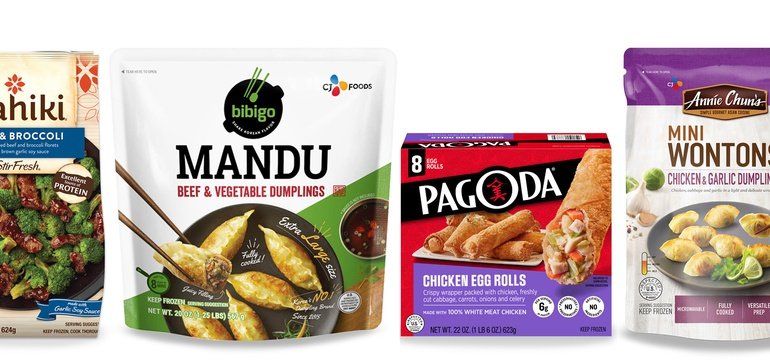How the rise in grocery e-commerce is reshaping food marketing

Roberto Rios is the chief marketing officer of Schwan’s Company.
There is no disputing it: The COVID-19 pandemic dramatically changed how people shop for food. From reenergizing the frozen aisle and center of store, to ushering in a new wave of health-conscious consumers, the past 18-plus months have transformed the grocery buying experience. Perhaps the biggest shift – and one that I predict is here to stay – is the sharp rise in e-commerce grocery shopping. Consider these statistics from the Food Marketing Institute’s U.S. Grocery Shopper Trends 2021 report:
- 62% of shoppers order groceries online at least occasionally, jumping from just 34% in February 2020.
- 29% of online grocery shippers order once a week or more, compared to 21% in February 2020.
- Online grocery shopping increased among all age groups with 78% of Gen Z, 88% of millennials, 36% of boomers, and 34% of mature shoppers doing so occasionally.
Shoppers who may not have considered buying their groceries online prior to the pandemic lockdown were forced to quickly get familiar with the process. Discovering how simple and convenient the experience proved to be, many will continue to take advantage of the option at least some of the time.
But what does the rise in e-commerce food shopping mean for food brands eager to introduce new brands to consumers, and food marketers looking to reach new audiences with their products? It means we need to devise creative, innovative solutions to capture consumers who are scrolling versus strolling brick-and-mortar stores. And if the new strategies do double duty in reaching both online and in-store shoppers, even better.

Roberto Rios
Courtesy of Schwan’s Company
As CMO at Schwan’s, an affiliate of CJCJ Food Americas, and responsible for brands including Red Baron, Freschetta, Bibigo, Annie Chun’s and Pagoda, my team and I have been wrestling with how to introduce new SKUs and products to consumers in this era of e-commerce.
Four major activity themes have emerged:
- Creative sampling: In-store sampling is one way we have historically introduced new products and brands to consumers, particularly our Bibigo brand of Korean-style dumplings and meal solutions. Sampling in big-box stores was actually the primary way we marketed the Bibigo brand (which is No. 1 in Korea) to U.S. consumers. The pandemic curtailed many of those opportunities, which we are just now starting to re engage in some markets. In the absence of those opportunities, and with the rise of online shopping, we’ve created special sample packs for e-commerce that bundle several complementary products together for complete meal solutions. In this way, people who already enjoy our Mandu can be introduced to our crispy Korean-style chicken.
- Partnering with e-commerce meal kit companies: The emergence of meal kit delivery services presents another opportunity to introduce likely consumers to our brand offerings by including samples and/or coupons in the shipments. Partnering with such companies allows us to increase exposure to our global flavors with consumers who have already demonstrated interest in diverse cuisines.
- Innovating digital marketing tactics: Rebalancing marketing dollars, where appropriate, to increase digital, social and media marketing outreach to specially segmented audiences is a core strategy. Along with this, we have increased our social listening capabilities to better understand general and post-purchase online chatter, which allows us to adjust our marketing messages and social buys in near real-time.
- Building digital shelves: In-store shoppers often stumble upon new and interesting products in specific food aisles. Mimicking that interaction with digital shelves on e-commerce sites allows for similar exploration and discovery. These digital shelves have been shown to increase traffic and improve conversion to double sales.
Figuring out what works and what doesn’t will take time, as well as trial-and-error. But aided by sales and marketing data, as well as close listening to and understanding of our customers, we will all enter this next era of food marketing aimed toward success.
Source: fooddive.com

